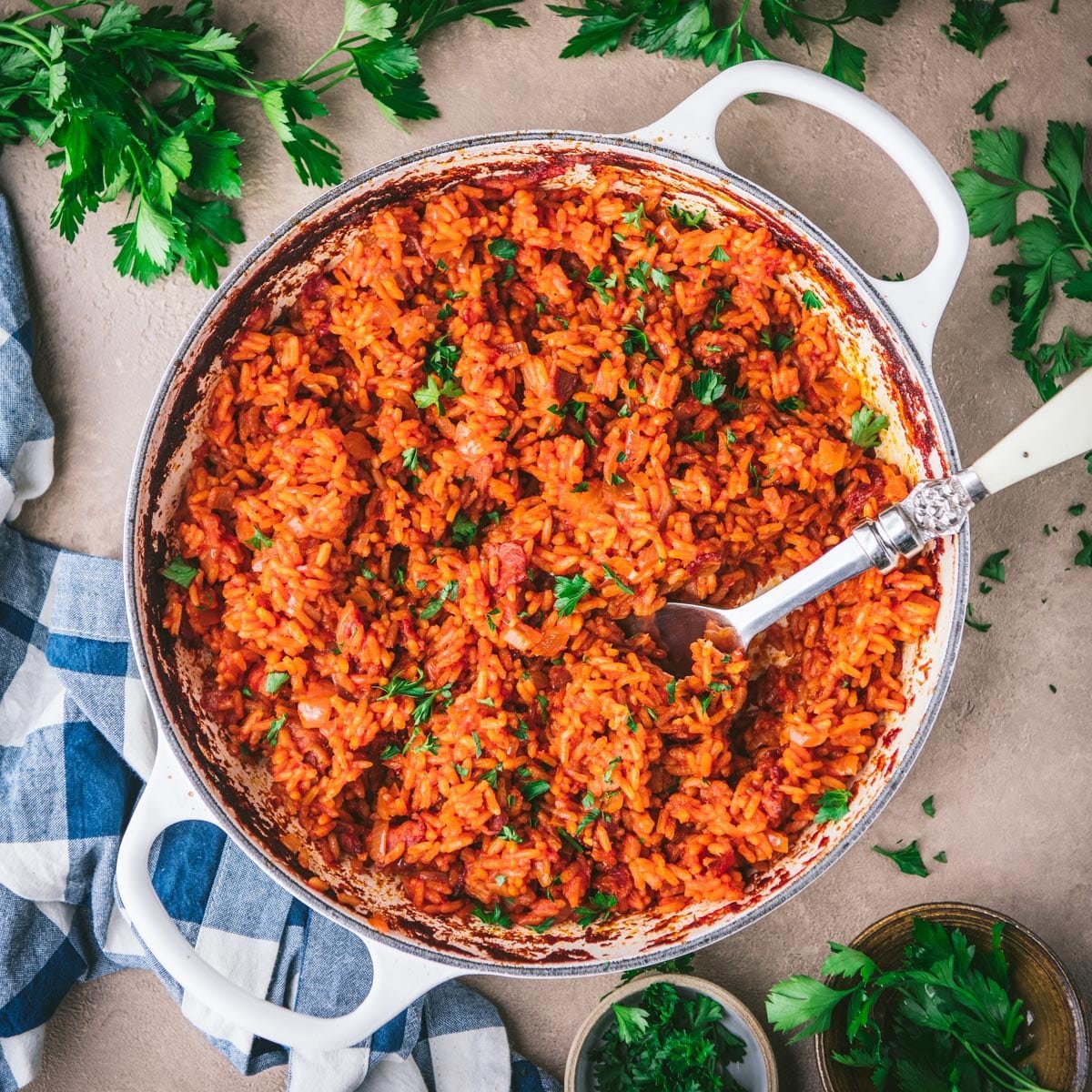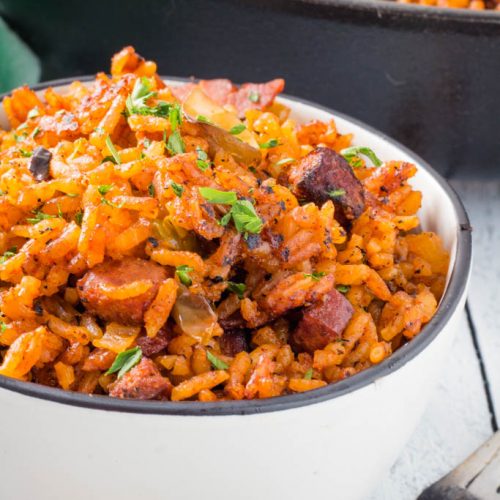Charleston red rice is more than just a dish; it’s a culinary tradition deeply rooted in the history and culture of the American South, particularly in Charleston, South Carolina. This flavorful and aromatic rice dish is a staple of Lowcountry cuisine, embodying the region’s rich heritage and culinary artistry.
The Origins of Charleston Red Rice
Charleston red rice, also known as “tomato pila0” or “Savannah red rice,” has its origins deeply entwined with the African diaspora. The dish traces back to the enslaved Africans who were brought to the Lowcountry region. These people brought with them their rich culinary traditions, including the techniques and ingredients that would form the basis of Charleston red rice. The dish is a testament to the resilience and creativity of these communities, who adapted their traditional recipes to the new ingredients available in America.
Rice itself has a storied history in South Carolina. During the colonial period, rice became a significant cash crop in the region, leading to the development of a wealthy plantation economy. The expertise of West African slaves in rice cultivation was instrumental to this success. The red rice dish likely evolved as these communities combined local ingredients like tomatoes with their traditional rice dishes, creating a unique fusion that has stood the test of time.
Ingredients and Preparation
Charleston red rice is celebrated for its simplicity and depth of flavor. The core ingredients typically include long-grain rice, tomatoes (or tomato paste), onions, bell peppers, celery, and a variety of seasonings. Bacon or smoked sausage is often added to enhance the dish with a rich, smoky flavor. Some variations also include shrimp or chicken.

Ingredients:
- Long-Grain Rice:
The foundation of the dish, providing a tender and fluffy texture. - Tomatoes:
Fresh tomatoes or tomato paste give the rice its distinctive red color and tangy flavor. - Onions, Bell Peppers, and Celery:
Known as the “Holy Trinity” in Southern cooking, these vegetables add depth and aromatic qualities. - Bacon or Smoked Sausage:
Adds a smoky richness that complements the tangy tomatoes. - Seasonings:
Garlic, thyme, bay leaves, and cayenne pepper are commonly used to create a well-rounded and slightly spicy flavor profile. - Chicken Broth:
Used to cook the rice, adding extra flavor and richness.
Preparation:
- Sauté the Vegetables and Meat:
Start by sautéing diced bacon or smoked sausage in a large pot until it renders its fat. Add chopped onions, bell peppers, and celery, cooking until they are soft and fragrant. - Add Tomatoes and Seasonings:
Stir in fresh tomatoes or tomato paste, along with minced garlic, thyme, bay leaves, and cayenne pepper. Cook the mixture until the tomatoes break down and the flavors meld together. - Incorporate the Rice:
Add the long-grain rice to the pot, stirring to coat each grain with the flavorful tomato mixture. - Simmer:
Pour in chicken broth, bring the mixture to a boil, then reduce the heat to low. Cover the pot and simmer until the rice is tender and has absorbed the liquid, about 20-25 minutes. - Finish and Serve:
Once the rice is cooked, fluff it with a fork and adjust the seasoning to taste. Serve hot, often accompanied by collard greens, cornbread, or fried chicken.
Cultural Significance and Modern Adaptations

Charleston red rice is more than a beloved dish; it is a symbol of the cultural and historical fusion that defines the Lowcountry. It represents the blending of African, Native American, and European influences that have shaped Southern cuisine.
In contemporary Charleston, red rice is a staple at family gatherings, holiday feasts, and local restaurants. It is often featured at community events and food festivals, where chefs and home cooks alike showcase their unique takes on the traditional recipe.
Modern adaptations of Charleston red rice can vary significantly, reflecting personal tastes and dietary preferences. Some versions might incorporate seafood, like shrimp or crab, emphasizing the coastal connections of Charleston cuisine. Others might use turkey sausage or omit the meat entirely for a vegetarian version. Despite these variations, the essence of the dish—a flavorful, comforting rice pilaf—remains the same.
Watch Full Video:-
Charleston Red Rice Recipe
Ingredients:
- 1 cup long-grain rice
- 4 slices of bacon or 1/2 pound smoked sausage, diced
- 1 medium onion, chopped
- 1 bell pepper, chopped
- 2 celery stalks, chopped
- 2 cloves garlic, minced
- 1 (14.5-ounce) can diced tomatoes
- 1/4 cup tomato paste
- 2 cups chicken broth
- 1 bay leaf
- 1 teaspoon dried thyme
- 1/2 teaspoon cayenne pepper (optional)
- Salt and pepper to taste
- 2 tablespoons vegetable oil (if using bacon)
- 2 green onions, chopped (optional, for garnish)
Instructions:
- Cook the Meat:
- In a large pot or Dutch oven, cook the diced bacon or sausage over medium heat until browned and crispy. If using bacon, remove the bacon pieces and set aside, leaving the rendered fat in the pot. If using sausage, leave it in the pot.
- Sauté the Vegetables:
- Add the chopped onion, bell pepper, and celery to the pot with the bacon fat or sausage. Sauté until the vegetables are softened, about 5-7 minutes.
- Add the minced garlic and cook for another minute, until fragrant.
- Add Tomatoes and Seasonings:
- Stir in the diced tomatoes and tomato paste. Cook for a few minutes to combine the flavors.
- Add the bay leaf, thyme, cayenne pepper (if using), salt, and pepper. Stir well to incorporate the seasonings.
- Add Rice and Broth:
- Add the long-grain rice to the pot, stirring to coat the rice with the tomato mixture.
- Pour in the chicken broth and bring the mixture to a boil.
- Simmer:
- Reduce the heat to low, cover the pot, and let it simmer for about 20-25 minutes, or until the rice is tender and has absorbed most of the liquid.
- Check occasionally and stir to prevent sticking, adding more broth or water if necessary.
- Finish and Serve:
- Once the rice is cooked, remove the bay leaf and fluff the rice with a fork. If you set aside the bacon pieces, stir them back into the pot.
- Adjust seasoning with salt and pepper to taste.
- Garnish with chopped green onions if desired.
- Serve:
- Serve the Charleston red rice hot, ideally with Southern favorites like fried chicken, collard greens, or cornbread.
Cooking Techniques and Tips

Making the perfect Charleston red rice requires attention to detail and a few key techniques. Here are some tips to ensure your red rice is flavorful and authentic:
- Use Quality Ingredients:
Fresh, ripe tomatoes and high-quality rice can make a significant difference in the dish’s flavor and texture. - Don’t Rush the Sauté:
Allow the vegetables and meat to cook slowly, drawing out their flavors and building a rich base for the rice. - Layer the Seasoning:
Season each component of the dish as you go, ensuring that every bite is well-flavored. - Cook the Rice Properly:
Be careful not to overcook the rice. It should be tender but not mushy. Keep an eye on the liquid levels and adjust as necessary. - Rest Before Serving:
Allow the rice to sit off the heat for a few minutes before serving. This helps the flavors meld together and makes the rice easier to fluff.
Serving Suggestions
Charleston red rice is a versatile dish that pairs well with various Southern favorites. Here are some ideas for serving it:
- With Barbecue:
The smoky, tangy flavors of barbecue meats like pulled pork or ribs complement the savory notes of red rice. - With Seafood:
Grilled or fried shrimp, crab cakes, or catfish make excellent accompaniments, highlighting the coastal heritage of Charleston cuisine. - With Greens:
Traditional Southern sides like collard greens, mustard greens, or kale provide a nutritious and flavorful balance to the hearty rice. - With Cornbread:
A slice of warm, buttered cornbread is the perfect way to sop up any extra sauce and complete the meal.
Charleston Red Rice in Popular Culture
Charleston red rice has made appearances in various forms of popular culture, from cookbooks to television shows, as a representation of Southern hospitality and culinary tradition. Food writers and chefs often highlight the dish when discussing the rich tapestry of American regional cuisines.
In recent years, the dish has gained renewed attention through the efforts of chefs and food historians dedicated to preserving and promoting African American culinary traditions. This focus has helped bring greater appreciation and recognition to the contributions of African American cooks and their influence on Southern foodways.
FAQs:-
1. What is Charleston red rice?
Charleston red rice is a traditional Southern dish from Charleston, South Carolina, known for its distinctive red color and rich flavor. It typically consists of long-grain rice, tomatoes, onions, bell peppers, celery, and smoked sausage or bacon, seasoned with garlic and spices.
2. What makes Charleston red rice red?
The red color of Charleston red rice comes from tomatoes or tomato paste used in the recipe. The tomatoes not only give the dish its characteristic hue but also add a tangy and savory flavor.
3. Can I make Charleston red rice without meat?
Yes, you can make a vegetarian version of Charleston red rice by omitting the bacon or smoked sausage. To add depth of flavor, you can use smoked paprika or liquid smoke as a substitute for the smoky taste.
4. What type of rice is best for Charleston red rice?
Long-grain rice is traditionally used for Charleston red rice because it cooks up fluffy and separate. Avoid using short-grain rice, which tends to be stickier and less suited to this dish.
5. Can I use fresh tomatoes instead of tomato paste?
Yes, you can use fresh tomatoes instead of tomato paste. Just make sure to cook them down until they are soft and their juices have reduced to create a rich, concentrated flavor.
6. How do I prevent the rice from becoming mushy?
To prevent mushy rice, ensure you use the correct rice-to-liquid ratio and avoid overcooking. Generally, 1 cup of rice to 2 cups of liquid works well. Cook the rice on low heat and fluff it with a fork after it’s done to maintain its texture.
7. Can Charleston red rice be made in advance?
Yes, Charleston red rice can be made in advance and reheated. It often tastes even better the next day as the flavors have more time to meld. Store it in an airtight container in the refrigerator for up to 3 days.
8. What are some common variations of Charleston red rice?
Common variations of Charleston red rice include adding seafood like shrimp or crab, using different types of sausage, or adding additional vegetables like okra. Each variation offers a unique twist while maintaining the dish’s core elements.
9. Is Charleston red rice spicy?
Charleston red rice can have a mild to moderate level of spiciness depending on the recipe. Cayenne pepper or hot sauce is often used to add a bit of heat. You can adjust the amount of spice to suit your personal taste.
10. What dishes pair well with Charleston red rice?
Charleston red rice pairs well with various Southern dishes, including fried chicken, barbecue ribs, collard greens, cornbread, and seafood like shrimp or catfish. These pairings create a well-rounded and satisfying meal.
11. Can I freeze Charleston red rice?
Yes, Charleston red rice can be frozen for later use. Allow it to cool completely, then store it in an airtight container or freezer bag for up to 3 months. Thaw in the refrigerator and reheat thoroughly before serving.
12. What is the historical significance of Charleston red rice?
Charleston red rice has its origins in the culinary traditions brought to the Lowcountry by enslaved Africans. It reflects a blend of African, European, and Native American influences and is a testament to the cultural heritage and resilience of these communities.
13. Are there any special tips for making authentic Charleston red rice?
To make authentic Charleston red rice, use high-quality ingredients, layer your seasoning, and allow the flavors to meld by cooking the dish slowly. Using smoked meat and fresh vegetables also enhances the traditional taste.
14. What is the “Holy Trinity” in Southern cooking and how does it relate to Charleston red rice?
The “Holy Trinity” in Southern cooking refers to the combination of onions, bell peppers, and celery. These vegetables are essential in creating the aromatic base for many Southern dishes, including Charleston red rice, adding depth and flavor.
15. How do I store leftovers of Charleston red rice?
Store leftovers in an airtight container in the refrigerator for up to 3 days. Reheat in the microwave or on the stovetop, adding a splash of water or broth if needed to restore moisture.
Conclusion
Charleston red rice is more than just a delicious dish; it is a culinary legacy that reflects the history, culture, and resilience of the Lowcountry. Its rich flavors and comforting textures make it a beloved staple in Southern kitchens, while its origins tell a story of cultural fusion and adaptation.
Whether you’re a seasoned cook or a curious food enthusiast, making Charleston red rice at home is a wonderful way to connect with a piece of American culinary history. With its simple ingredients and satisfying flavors, it’s no wonder this dish has remained a cherished part of Charleston’s food culture for generations.
So next time you’re in the mood for a taste of the South, gather your ingredients and try your hand at Charleston red rice. It’s a dish that’s sure to bring a touch of Southern warmth and tradition to your table.
ALSO READ:- COLD SOBA NOODLES

